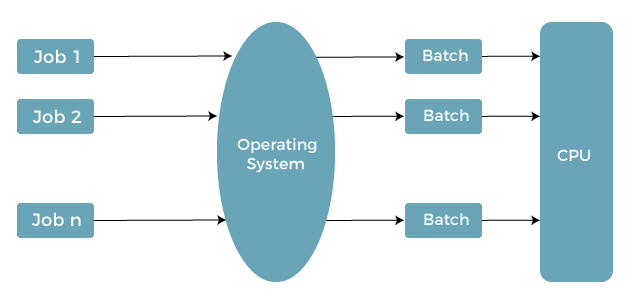

However, the user was required to prepare a job that included the program, control information, and data on the nature of the job on control cards. The user did not directly interact with the computer system for job execution in a simple batch operating system. There are mainly two types of the batch operating system.

In this article, you will learn about the batch operating system, types, working, and its advantages and disadvantages. The batch operating system eliminates the setup time issue. It only executed one job at a time, and data was sent in batches or groups. In the early 1950s, General Motors Research Laboratories (GMRL) introduced the first Single-Stream batch processing systems. The primary problem at the time was a lack of hard disks. Instead, large mainframe computers were used to process data, with punched cards or magnetic tapes serving as input and output. There were no developed operating systems, complex computer architecture, or secondary memory devices in the 1950s and 1960s. These systems are known as batched operating systems, and users have to prepare a job separately to execute it. Users had no direct interface with the system, and job execution was done in a batch system.

In general, tape drivers or card readers were used for input, and tape drives, punch cards, and line printers were used for output. In the beginning, computers were extremely large machines that ran from a console.


 0 kommentar(er)
0 kommentar(er)
